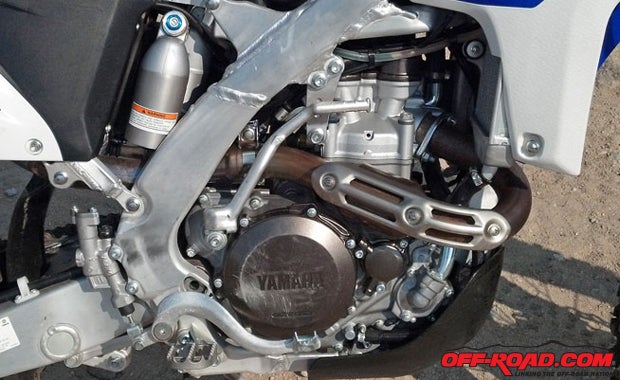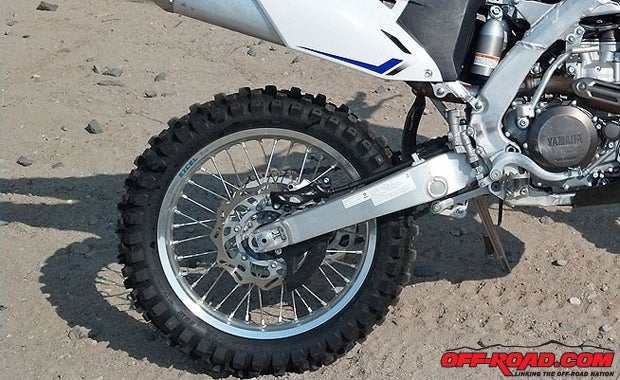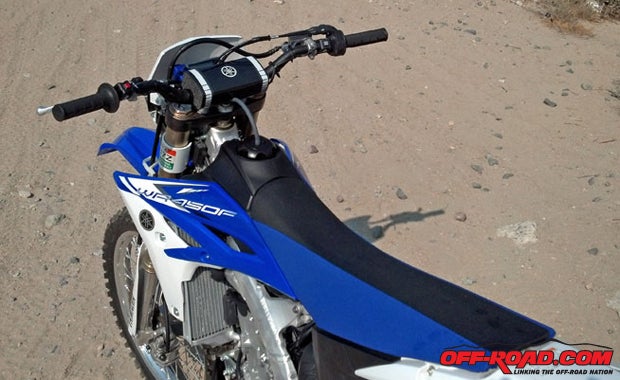
Thanks to KTM, European brands pretty steal more than their fair share of headlines in the off-road motorcycle market these days, restoring a polar shift that occurred in the early 1970s when the Japanese manufacturers began to flood the market with fast and inexpensive dirtbikes for riders young and old. It only took a couple of years for the Honda, Kawasaki, Suzuki and Yamaha to eat into the market that was once owned by old-world European brands such as Husqvarna and CZ. Japanese dirtbikes were everywhere.
These days, KTM now offers several exciting models for off-road riders, Husqvarna has been on a slow but steady climb back into prominence, and smaller yet no less dynamic companies such as trials bike giants Beta and Gas Gas have devoted a lot of time and resources into manufacturing excellent off-road bikes.

By contrast, the Big Four manufacturers have pared back the number of hard-core off-road models they sell, and only two—Yamaha and Honda—offer race-ready Open-class off-road machines. Still, Yamaha’s WR450F is far from just a token entry in the market. Influenced by its YZ450F motocross sister, the WR has enjoyed steady refinement, and it combines YZ motocross-style power in a lightweight, 250F-derived chassis with awesome handling.
The WR450F’s has followed in the knobby tracks of its YZ450F sister from the very beginning. Starting life in the late 1990s as a 400cc machine, its displacement later increased to 426cc before being pumped up to its current 450cc engine size. Along the way, the WR has received numerous technical improvements learned from Yamaha’s YZ and WR factory race programs. The latest-generation WR450F is not yet powered by a version of the YZ’s forward-positioned, rear-inclined cylinder power plant, but that’s no handicap. Its liquid-cooled 449cc DOHC four-stroke engine still delivers the right kind of power for any off-road situation.

Yamaha last updated the WR in 2012 when it ditched the WR’s antiquated carburetor in favor of electronic fuel-injection. The benefits were immediate, including better throttle response and easier power tuning via and adjustable ECU. But perhaps most importantly, the EFI allowed the WR450F to be EPA- and CARB-certified so that it can be ridden on public OHV lands in all 50 states.
Swing a leg over the WR450F, and the first thing you’ll appreciate is its handy electric start feature. Not that the WR is a hard to light off with its “accessory” kickstart lever, but for inseam-challenged riders or vets, less energy spent kicking equals more energy spent riding. Once the WR settles into an idle, you’ll also notice how smoothly it runs. Yamaha engineers worked on reducing vibration by paying careful attention to the WR’s crank balance in conjunction with the AC generator that powers the WR’s lighting system to quell harsh vibration. The WR isn’t a sewing machine, but it is definitely emits less vibration than a YZ.

Out on the trail, the WR’s five-vlve motor is blessed with a broad and muscular spread of power. Its YZ roots do shine through in the form of a snappy delivery, and compared to the Honda CRF450X that we tested earlier this season, the WR feels racier, with a more robust mid-range and top-end lunge. If there is a down side, however, it is that the WR engine is less tractable, something we found while negotiating our favorite technical off-road sections. Obstacles that were manageable with careful throttle control on the Honda required more concentration on the Yamaha to maintain traction. Its fuel-injection and digital TCI ignition combine to keep the power crisp with a linear throttle response, but the WR’s quick-revving engine feels like has less flywheel mass than the Honda.
That said, it takes little more than a finger on the WR’s light and smooth clutch to keep its rear wheel from spinning uncontrollably, and when traction is abundant, the WR delivers plenty of off-road thrills. And if you really want to go fast, there are ways to unleash the beast in the WR even further. Removing the restrictive baffle in the WR’s repackable, USFS-approved aluminum muffler will allow the engine to breathe better, and swapping to a YZ throttle housing from the same year does away with the throttle stop required to help the WR meet emissions, unleashing even more power. However, it should be noted that these changes do make the WR illegal for anything other than closed-course riding.

The WR’s wide-ratio five-speed transmission shifts smoothly but not as smoothly as some of its competition. We never missed a shift while riding the WR, however, and its transmission ratios are spaced perfectly, with a low gear that can allow the rider to tackle tight terrain, such as when picking through tight woods or over rocks. And if you should find that you need to make a clutch adjustment when torturing the WR through gnarly, enduro-like low-speed sections, the clutch lever features an oversized barrel adjuster for on-the-fly adjustability of lever/cable play.
Despite a rather hefty claimed wet weight of 273 lbs., the WR450F feels light and flickable on the trail at high or low speeds. It’s no feather, but its YZ250F-bred aluminum perimeter frame—a mix of castings, forgings and extrusions that comprise the main frame and a removable aluminum rear subframe constructed of square-section tubing—helps the big WR feel much smaller and lighter than it is, and Yamaha has clearly done a good job of getting all that weight where it doesn’t hinder the WR’s steering. Our testing included every type of terrain from hard-packed fire roads to sandy, wooded single track, and we never found ourselves wanting more steering precision. At high speed, the WR’s 57.7-inch wheelbase helps keep it as stable as an arrow, yet it is willing to change directions more quickly than a CRF450X.

The slim and flat feel of the WR’s cockpit is also a plus. The layout allows the rider to move freely when negotiating nasty terrain and still maintain good leverage on the WR’s tapered aluminum handlebar. The WR’s seat padding offers plenty of comfort when the rider is seated, which is great for long rides. We also appreciate that Yamaha’s effort to keep the WR’s 2.1-gallon fuel tank and radiator shrouds slim despite the use of large-capacity radiators necessary to help keep the high-revving WR from overheating.
Yamaha’s YZ motocrossers gets the trick KYB Speed-Sensitive System cartridge fork, while the WR uses an older but still very competent fully adjustable KYB 48mm cartridge-type fork. The fork delivers 11.8 inches of plush, controlled travel, while a KYB piggyback reservoir shock out back matches the fork’s performance with 11.6 inches of travel. The shock is adjustable for high- and low-speed compression damping as well as rebound damping and spring preload, and it is mated to a tapered swingarm that uses YZ-style linkage to keep the rear suspension compliant whether hammering across adobe-baked whoops or plowing through sand.

Wave-style brake discs designed to reduce unsprung weight do an excellent job of stopping the WR. Both the front and rear calipers feature aluminum pistons and offer plenty of power with a linear feel, and the front brake lever is adjustable to tailor the braking feel to rider preference. The brakes are mounted to stout hubs laced to high-quality Excel rims measuring 21 inches in diameter up front and the off-road standard 18 inches in the rear (vs. a 19-inch rear for motocrossers). The wheels feature collars that make wheel removal quick and easy, bonus in events where pit stops to change tires may be necessary. The WR’s Dunlop tires offer consistent grip and feel regardless of terrain.
The WR features a nifty digital enduro computer that offers basic speedometer, clock and tripmeter functions as well as a “race mode” with more advanced, enduro competition-worthy functions such as a timer, distance-compensating tripmeter and average speed. The computer is mounted on the WR’s triple clamp, which is forged rather than cast. Other WR-specific off-road equipment includes one-piece plastic skid plate shaves weight while still offering the engine cases a measure of protection from rocks and a s 35-watt headlight and LED taillight designed to maximize visibility while drawing a minimum of electrical current. Lastly, the WR’s air filter maintenance is facilitated by tool-less removal.
For a retail price of $8290, the Yamaha WR450F represents a lot of bang for the buck in the Open-class off-road world, an admirable trait that harkens back to the early days of Japanese dirtbikes. Its stellar engine, excellent handling and plush suspension make it a competitive off-road race machine right out of the crate, yet its electric start and comfortable ergonomics make it easy to enjoy on long rides in the desert or the woods. If you’re an off-road racer or a serious weekend play rider seeking an alternative to an expensive European machine, Big Blue may just have the bike for you.


 Your Privacy Choices
Your Privacy Choices